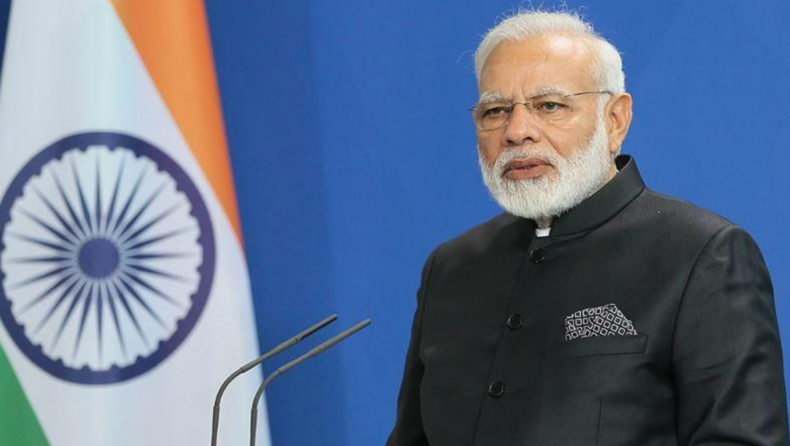This article is about PM Modi’s massive employment drive which will result in ten-lakh, job creation for the unemployed citizens of the country.

The PMO announced today, 14 June, that Prime Minister Narendra Modi has ordered several government departments and ministries to recruit 10 lakh employees in “mission mode” within the next year and a half for the fulfillment of the Job-creation drive.
The Prime Minister’s Office tweeted that Prime Minister Narendra Modi evaluated the state of human resources across all government departments and ministries on Tuesday, mandating that ten lakh workers should be hired in the next 18 months.
The massive announcement on new hires is a welcome move, as the economy is already facing enormous headwinds and the job market is under severe strain, primarily because of Russia-Ukraine conflicts that have been ongoing for almost two months
According to the Department of Expenditure on Pay and Allowances’ most recent annual report, the total number of regular central government civilian workers in position (including in the Union territories) on March 1, 2020, was 31.91 lakh.
In comparison to the sanctioned strength which was 40.78 lakh, in which approximately 21.75 percent of the positions are vacant, eventually means that a lot of positions are vacant for the struggling citizens to get a government job.
According to the report, five key ministries or departments account for over 92 percent of total manpower going to railways, defense, home affairs, posts, and revenue.
Railways account for 40.55 percent of the overall strength of 31.33 lakh (except Union territories), home affairs 30.5 percent,
defense 12.31 percent, posts 5.66 percent, revenue 3.26 percent, and all other ministries and departments 7.72 percent.
In 2019-20, the total expenditure on pay and allowances for regular central government civilian employees, including the workforce of Union territories and operations (excluding productivity-linked bonus or ad hoc bonus, honorarium, encashment of earned leave, and traveling allowance) was 2,25,744.7 crore, up from 2,08,960.17 crore in 2018- 19.
As per the data report, as of March 1, 2020, 9.05 lakh employees were working in central police forces, compared to a sanctioned manpower of 10.16 lakh.
According to government sources, many departments and ministries were requested to furnish data on openings in response to Modi’s directive, and the decision to hire 10 lakh employees was made after an overall evaluation of job vacancies.
Opposition parties have attempted to corner the BJP on the problem of unemployment during past Assembly elections, but the party has been successful in deflecting the criticism with its pillars of welfare, developmental growth, and Hindutva.
The party has also frequently denied the opposition’s claim about unemployment in the country and said that its different programs have increased entrepreneurship and overall job creation.
This action of giving jobs to the unemployed will go a long way in not just relieving the ordinary man’s concerns, but also blunting the Opposition’s attack.
FAQs related to the PM Modi’s massive job-creation drive: –
When is the deadline for filing the positions?
The deadline that which center has set is till December 2024 for filling 10 lakh positions, implying that all recruitment must take place within 18 months.
What projects were launched in this regard?
The Indian government unveiled the Aatmanirbhar Bharat package to help businesses grow and mitigate the negative consequences of COVID-19. The government concentrated this package on a fiscal stimulus of more than Rs 27 lakh crore, which included several programs aimed at increasing employment. The Employees’ Provident Fund Organization (EPFO) has implemented this program intending to reduce the financial burden on companies and encourage them to hire more workers.
What is the goal of the government?
The goal is to improve employment opportunities while also enhancing the public’s employability and creating more job opportunities.
How should we prepare for the recruitment?
General Knowledge, Reasoning, and Quantitative Aptitude are the three key areas covered in most government job tests. NCERT history, geography, science, and social science texts from grades 6 to 12 can be used for general knowledge.
To ace the logical thinking section, practice Data Sufficiency, Number Series, Coding and Decoding, Seating Arrangements, Blood Relations, and Directions. Focus on profit and loss data interpretation, time and work, simplification, and other topics in the Quantitative Aptitude part.
This step of the central government toward the job-creation drive is very positive as it will help both educated and uneducated to get jobs and secure their future. When all the vacant positions will be filled then the economy of the country will also grow as well as the development of the country will increase at a higher pace. This initiative will help lakhs of people to get a government job for which they try for years. If this drive becomes successful then it will grow the country and the people of the country together.













